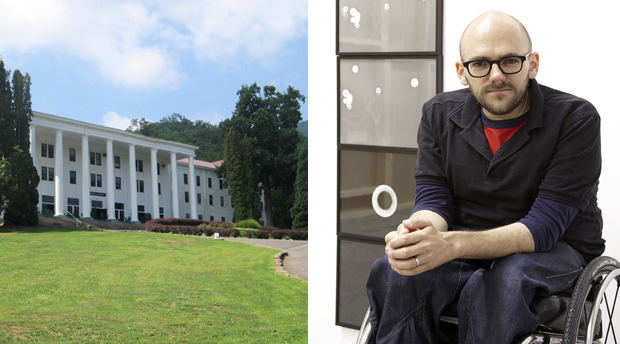
Ryan Gander plans to set up own art school
Locked Room Scenario artist joins new grassroots approach to art education
The idea of artists setting up their own schools isn’t exactly new. The most famous example is probably Black Mountain College, founded in 1933 in North Carolina. Experimental in nature and attracting many of America’s leading artists and designers of the day (among them Buckminster Fuller, Josef Albers, John Cage, Willem de Kooning and Walter Gropius) it effectively incubated the avant-garde and helped change the face of cultural America.
In the Fifties, economist turned Fluxus artist Robert Filiou initiated his "Un-school" in France and more recently Piero Golia & Eric Wesley (Mountain School of Arts, LA), Michaelangelo Pistoletto (Cittadelarte), and Olafur Elliasson, (who's built a school on top of his studio) have all had a go at subverting the traditional notion of an art school education.
Now, Ryan Gander is having a go. The artist, who's currently showing Locked Room Scenario in London is appealing for donors to help him buy a Victorian school that’s up for sale for £2 million in the Suffolk town where he lives.
The artist who has for some time hosted free monthly 'night schools' at his east end studio tells Phaidon: "I've designed an art school with some architects which I've looked at opening at various points recently. Essentially, a good art school is just a warm room with other people in it. It doesn't need tutors or a library. I'm not fond of art education, I don't think it functions. You can't learn art because the more you learn the more you become like another artist.
"There are a lot of new grassroots approaches to art education at the moment," says Phaidon Commissioning Editor Craig Garrett. "There's definitely something in the air, and it stems from a couple factors. First, there's the participatory element in art, which has been growing since the mid-1990s. Second, institutional art schools have been evolving for decades, but the practice of art has been changing faster. Consequently, many students leave art school dissatisfied with the education they've received. It probably doesn't help that the cost of these schools has skyrocketed. Britain is an extreme example - here fees at most universities and art schools will triple next year."
Gander has been trialling a night school concept once a month at his east London studio for the last year. "I have a big studio and had a bit of guilt about it sometimes being empty. And I knew loads of brilliant people who I wanted to hear speak and who institutions wouldn’t be interested in so I got them in and invited people for free. Part of people being creative is to share ideas." The Prix de Rome winner, who has work in the Tate, Chicago Museum of Contemporary Art and Museum Modern Kunst, Vienna, thinks paper qualifications are actually detrimental to an artist in their attempts to develop a career.
"I left my MA two months before the end of it just so I wouldn't get the certificate. Because if you get the certificate you're not going to get into another MA and I knew if I left early I'd have two years somewhere else. The real value to an artist is time in a studio where you don’t have to work in a carpet shop or McDonald's or a pub. The piece of paper is not worth having. If you do want a piece of paper it’s much better to have one that’s signed by Martin Creed or Douglas Gordon, saying you helped them for a year. That's a much better experience than learning off some art tutor who hasn’t had a show for 15 years and isn’t in the field. It’s blatantly obvious that these things don’t do anything."
See Ryan Gander's website here